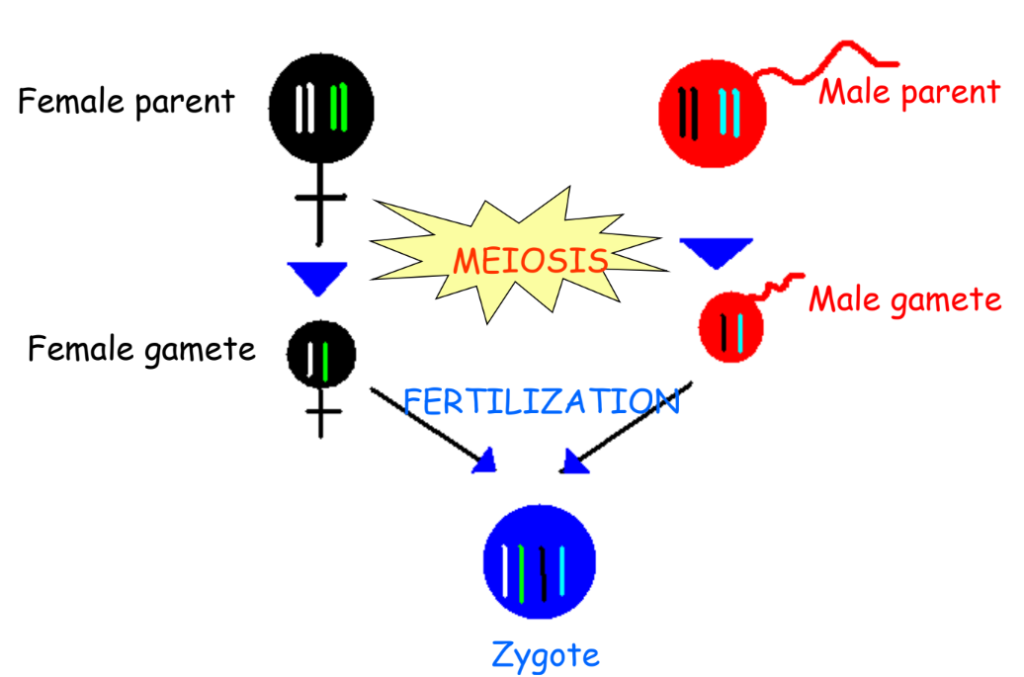Reproduction in Animals – Complete Guide For Class 8 Science Chapter 6
Welcome to iPrep, your Learning Super App! Our learning resources for the chapter, Reproduction in Animals Class 8th chapter 6 are designed to ensure that you grasp this concept with clarity and perfection. Whether you’re studying for an upcoming exam or strengthening your concepts, our engaging animated videos, practice questions and notes offer you the best of integrated learning with interesting explanations and examples.
The chapter on Reproduction in Animals in Class 8 Science underscores the critical role of reproduction as a fundamental biological process essential for the continuity of species. This topic explores two primary modes of reproduction: sexual and asexual. Sexual reproduction involves the fusion of male and female gametes to create genetic diversity and adaptability in offspring, with processes like internal and external fertilization playing crucial roles. Conversely, asexual reproduction allows organisms to produce genetically identical offspring rapidly, often in favorable conditions. Understanding these diverse reproductive strategies provides insight into how animals perpetuate their species, adapt to their environments, and contribute to the complexity of life.
Reproduction in Animals
Reproduction is the biological process by which new individual organisms are produced, ensuring the continuation of species from one generation to the next. This vital process can occur through sexual or asexual means, each playing a significant role in the survival and adaptation of species.
The Need for Reproduction
Reproduction is essential for the survival of species. Without it, species cannot sustain themselves over time. Sexual reproduction introduces genetic diversity, enhancing survival advantages, while asexual reproduction allows rapid population growth under favorable conditions.
Modes of Reproduction
Animals reproduce through two primary methods: sexual reproduction and asexual reproduction.
- Sexual Reproduction involves the combination of male and female gametes to form a zygote, leading to the development of a new individual. Key steps include gamete formation, fertilization, and embryonic development.
- Asexual Reproduction allows an organism to produce offspring identical to itself without the need for gametes. This method includes binary fission, budding, fragmentation, vegetative reproduction, regeneration, and spore formation.
Sexual Reproduction: Sexual reproduction starts with the formation of gametes i.e. sperm in males and ova in females. Fertilization, whether internal or external, results in the formation of a zygote. The zygote then undergoes development into an embryo, which eventually grows into a new individual.

Sperms
Sperms are the reproductive cells or gamete of the male. They are Small in size and each sperm have
- Head
- A middle piece
- A tail

Female Reproductive Organs
The female reproductive organs consist of a pair of ovaries, oviducts (fallopian tubes) and the uterus

- Internal Fertilization occurs inside the female’s body, as seen in humans, cows, and dogs.

- External Fertilization happens outside the female’s body, common in aquatic animals like fish and starfish.
In cases where natural fertilization is not possible, such as with blocked oviducts, techniques like in vitro fertilization (IVF) can be used to aid reproduction.
Embryonic Development
In reproduction, once fertilization occurs, the zygote implants in the uterus lining. The embryo develops with nourishment provided through the placenta. This intricate process continues for approximately nine months, culminating in childbirth.

Viviparous vs. Oviparous Animals: Reproduction in animals can be categorized into viviparous and oviparous methods, where-
- Viviparous Animals give birth to live young, examples include cows and horses.
- Oviparous Animals lay eggs, which develop outside the mother’s body, as seen in hens and lizards.
Some animals undergo dramatic changes from their juvenile to adult forms, such as frogs, which experience metamorphosis from tadpoles to adult frogs.
Asexual Reproduction: It is a process where a single organism produces offspring identical to itself without the need for fertilization. This method allows for rapid population growth and can occur through the mechanisms given below-



- Binary Fission involves a single cell dividing into two, as seen in bacteria and amoebas.
- Budding results in a new organism growing from the parent and then detaching, as in yeast and hydra.
- Fragmentation involves an organism breaking into pieces, each developing into a new individual.
- Vegetative Reproduction occurs in plants where new individuals arise from vegetative parts.
- Regeneration involves the regrowth of lost body parts or the forming of a new organism from a part.
- Spore Formation produces spores that can grow into new individuals.
Cloning: Cloning is the creation of an organism that is genetically identical to another, involving exact genetic duplication. It represents a form of asexual reproduction, producing a new organism with the same DNA as the original. Cloning can occur naturally, as seen in identical twins, or through scientific methods, such as somatic cell nuclear transfer. In these methods, the nucleus of a donor cell is inserted into an enucleated egg cell, which is then stimulated to develop into an organism. Cloning has significant implications in research, medicine, and agriculture, but it raises ethical and practical concerns.
This comprehensive guide on understanding reproduction in animals delves into the diverse and intricate methods through which life perpetuates itself. It highlights the remarkable adaptability and resilience of living organisms, from the complex processes of sexual reproduction—where genetic diversity and evolutionary advantages are key to the more straightforward mechanisms of asexual reproduction, which allow for rapid population growth. By exploring these varied reproductive strategies, we gain insight into how species ensure their survival, adapt to changing environments and contribute to the rich tapestry of life on Earth.
Practice questions on Chapter 6 - Reproduction In Animals
Get your free Chapter 6 - Reproduction In Animals practice quiz of 20+ questions & detailed solutions
Practice Now








